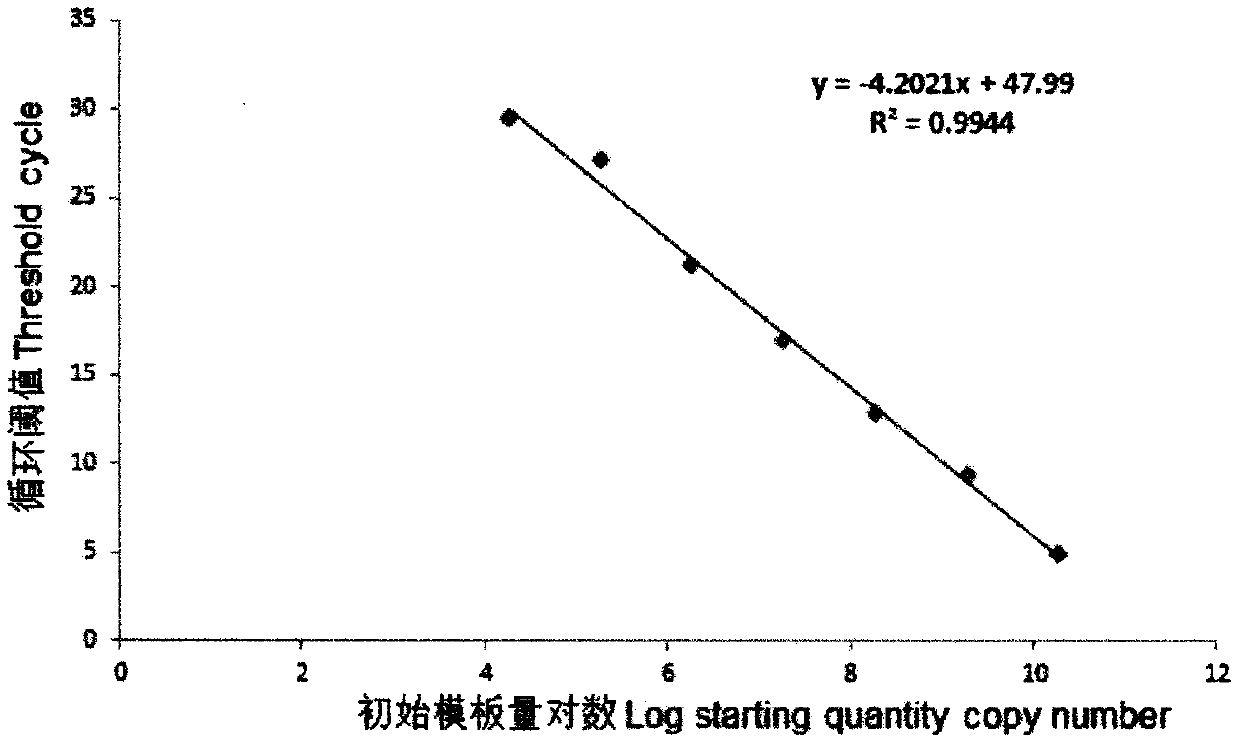Real-time fluorescent quantitative PCR method for detecting canine mycoplasmas
A real-time fluorescence quantification, Mycoplasma canis technology, applied in the biological field, can solve the problems of low sensitivity, pathogenic microorganism contamination, poor sensitivity, etc., and achieve the effect of good repeat stability, less DNA amount, and high sensitivity
- Summary
- Abstract
- Description
- Claims
- Application Information
AI Technical Summary
Problems solved by technology
Method used
Image
Examples
Embodiment Construction
[0032] In order to better understand the present invention, the content of the present invention is further illustrated below in conjunction with the examples, but it should not be construed as limiting the protection scope of the present invention. Some non-essential improvements and adjustments made by those skilled in the art based on the above content of the invention all belong to the protection scope of the present invention.
[0033] 1. Primer Design
[0034] Design specific primers according to the conserved region of the sialidase gene sequence of Mycoplasma canis published by GeneBank:
[0035] Mycoplasma canis-upstream primer: 5′-AAATCGAACTCGAGGACAACAAT-3′
[0036] Mycoplasma canis - downstream primer: 5'-AGCATCAAAAAACAACTTCCTTGC-3'
[0037] 2. Processing of samples to be tested
[0038] (1) Take a sterilized 2.0mL centrifuge tube, add 1.5mL of DMEM, then put the collected throat swab or urogenital tract swab, shake it on a shaker for 4-5h, then take out the cott...
PUM
 Login to View More
Login to View More Abstract
Description
Claims
Application Information
 Login to View More
Login to View More - R&D
- Intellectual Property
- Life Sciences
- Materials
- Tech Scout
- Unparalleled Data Quality
- Higher Quality Content
- 60% Fewer Hallucinations
Browse by: Latest US Patents, China's latest patents, Technical Efficacy Thesaurus, Application Domain, Technology Topic, Popular Technical Reports.
© 2025 PatSnap. All rights reserved.Legal|Privacy policy|Modern Slavery Act Transparency Statement|Sitemap|About US| Contact US: help@patsnap.com



